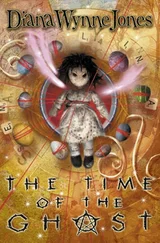My mother and aunt are different individuals, so why the fear of clones? Cloning is, after all, common. It is sex that is rare — to persuade two cells to fuse to make one is, in some ways, the antithesis of reproduction (which, in its clonal version, involves one cell splitting into two). Plenty of creatures, from fungi to lizards, manage without it (and even turkeys can be persuaded to lay eggs without benefit of males). Potatoes are clones and animals can, in principle, be multiplied in the same way. Take an early embryo, split it into pieces and, sometimes, each will grow into an identical twin. This has been successful in rhesus monkeys and, no doubt, could also be done on ourselves. Sheep and cattle have been split at the eight-cell stage, to give (so far) a maximum of five identical offspring. Cows from the same herd may differ greatly in the amount of milk they yield, and as it takes several years per generation it is much more efficient to clone the champion rather than mating her with some favoured bull. In the 1990s, the method was used by breeders in the United States. It failed because the calves tend, for some reason, to develop much larger than usual and either die or demand an expensive caesarian birth.
Cloning of the Dolly kind is more sophisticated, with the movement of nuclei between cells, but is, after all, just another form of reproductive technology. It follows in the tradition of the great Italian biologist Spallanzani who artificially inseminated a bitch in 1782. Cloning itself — the growth of an organism from an egg containing a foreign complement of genes-began in the 1950s with frogs. They have lazy embryos, because frog eggs are so stuffed with food that they divide to make several thousand cells before they use any of their own genes. Their eggs hence scarcely notice the insertion of another piece of DNA as they are well on in development before genetic information is needed. Sheep wait for just four cell divisions — the 16-cell stage of the embryo — before switching on their genes, while humans DNA becomes active after three division, pigs after two, and mice even before cell divisions begins. This slight delay might explain why sheep proved easier to clone than work on mice (which were recalcitrant about accepting alien genes) had suggested.
Apart from simple vanity or dislike of the opposite sex, cloning might be useful as an aid to the infertile. Perhaps a male is unable to make sperm: and one of his cell nuclei might be inserted into his wife's egg to make a clone. Perhaps one partner has a genetic illness and prefers to use the other's genes to avoid the risk to a child. There are also various eccentric ideas about armies made of cloned copies of some dictator. Whether they would obey orders is another question, and any cloned child, identical as it is to its parent, is likely to prove a particular disappointment should it fail to live up to expectations
None of these possibilities is legal — or feasible — at present. All the fuss about what might be done should be tempered with realism. Cloning, even of sheep, is a complicated business. First an egg must be harvested and the cells that are to provide the nucleus made ready. This is fused to an egg that has lost its own nucleus — with a Frankenstein touch — a burst of electricity, and stored in the reproductive tract of a second sheep. Those that pass the test are then moved to the surrogate mother herself. Dolly was the only one of three hundred experiments that worked and most cloned cattle, sheep and mice have been born dead or deformed. For humans, for the time being, moving cell nuclei around is just too risky. Even so it seems almost certain that cloning will, at least in one form, become part of medical practice.
In the early 1980s it was found that cells from embryonic mice could be kept alive in the laboratory and that some, instead of moving down the path to adulthood, stayed forever young: ready to develop into any tissue when prompted to do so. They have been kept as perpetual adolescents for up to ten years. The technique involves a certain trickery, with various growth factors added to the culture. These embryonic stem cells, as they are called, when injected into another developing embryo, are happy to develop into blood cells, nerves and so on; or, if they find themselves in the right place, into the precursors of sperm or egg. The recipient grows up as a chimaera; a mixture of cells with different genes — in effect, a mouse with four parents.
Human embryos, too, contain stem cells, but as these are obtained from the extras made after test-tube fertilisation, their use has caused controversy. They could be useful in making skin for burn victims, replacing the damaged nerve cells of those with Parkinson's disease, or even to generate whole organs, either for transplants, or to replace old tissue with new. Most illnesses nowadays are those of old age; and with the promise of such cells in fighting heart disease, cancer and so on as much as half the population might benefit from their use.
Nerve cells from foetuses inserted into the brains of patients with Parkinson's disease can relieve their symptoms of slow movement and rigidity: such juvenile cells can, it seems, change their personalities to adapt to the adult brain in which they find themselves. Even adults have stem cells in parts of the body that, like blood, muscle or liver, often regenerate. Such cells can be retrained to take up new and quite different jobs. Stem cells from the brain or from muscles will, with some urging, make blood cells, while the bone marrow is even more flexible as its stem cells can change into brain, liver and muscle. To inject adult stem cells from the marrow of a healthy patient can strengthen the bones of children with inherited damage to the skeleton and the same approach may reduce the severity of symptoms in people who suffer from Huntington's disease. Perhaps other damaged tissues such as those involved in Alzheimer's disease or diabetes might be helped. In mice, those from a normal embryo injected into a mutant animal lacking part of the sheath of insulation around certain nerves (a structure damaged in multiple sclerosis) make the missing material. Such cells injected into paralyzed rats restore movement. Stem cells are rare - about one in ten billion in the marrow — and not all the news is good; in mice, such cells injected into adults can grow into tumours and it may be necessary to add a suicide gene to kill them off if they turn nasty. Their very malleability may cause problems — who, after all, wants teeth to grow in their brain?
If stem cells pay off, a new era of medicine will begin. Perhaps everyone will keep a store of frozen cells taken at birth in the expectation that they will be needed later to repair an organ that fails with age or disease. On a more modest scale, it should be possible for every hospital to fill a freezer with such things taken from thousands of different people in the hope of having one ready for a match with some future patient who has not stored his own. Even if the hope of new organs is not fulfilled, they might be engineered to make them resistant to anti-cancer drugs so that anyone unfortunate enough to get the disease later in life can be treated with larger doses and his blood-making capacity maintained with material kept in frozen adolescence.
Chimaeras made with the help of stem cells sometimes use them to make not liver or brain but sperm or eggs. Then, all its offspring resemble the stem-cell parent, and, if that individual has been engineered, will carry the inserted gene. That played a crucial part in the tale of Dolly. Remarkable animal as she is, Dolly is, in the end, just a sheep. By adding DNA a small proportion of the millions of cells in a culture dish can be persuaded to rake up the alien gene and, with luck, force it to do its job. To insert such transformed stem cells into another animal does to mammals what was once possible only with bacteria. Dolly's successor, Polly, was cloned from cells that contained a human gene for the blood protein missing in one form of haemophilia attached to an on-off switch for sheep milk proteins. Sheep cells can be transformed in this way and, from one engineered beast, a whole herd can grow. Not many may be needed: a thousand animals could satisfy the world demand for the enzyme used to help patients with emphysema, but each may be valued at many thousands of dollars.
Читать дальше
Конец ознакомительного отрывка
Купить книгу












